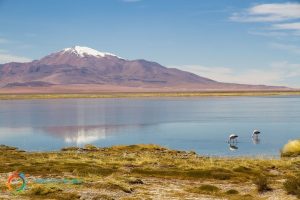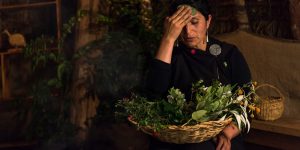Everything you need to know about the Araucaria, the national tree of Chile
By: Chile Travel - 28 August, 2021
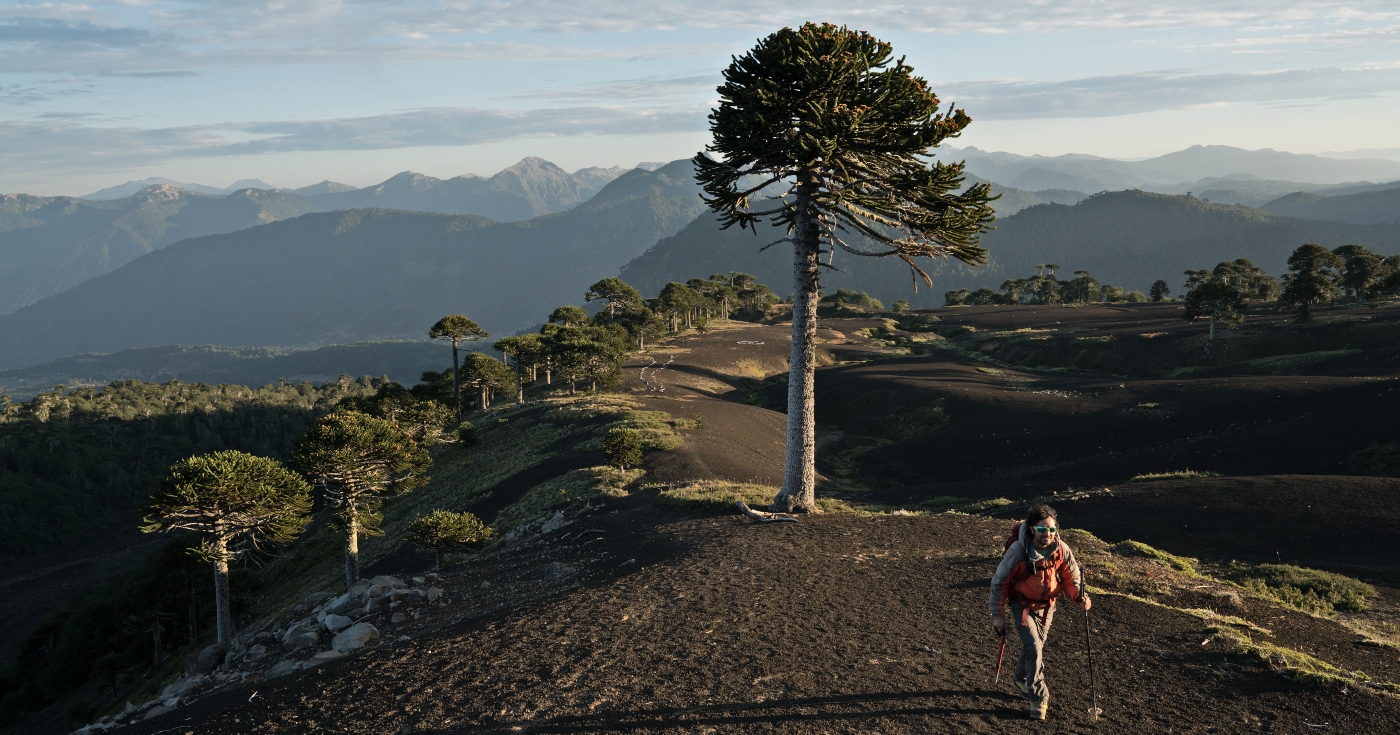
It is called Pehuén in the aboriginal Mapuche language, best known as the Araucaria, this tree is representative of Chile and is one of the most loved trees on this side of the world. Impressive beauty and always green, people from all over the world travel thousands of kilometers to hug one of the oldest trees on the planet, the Araucaria, our national tree.
Its trunk is thick and cracked, it has pointy and scaly branches, and a beautiful silhouette that can reach up to 50 meters high. Its genetic history dates back 240 million years, making a walk through the woods with Araucarias a magical experience, even to the point that is has been fighting against the threat of disappearing.
Unfortunately, currently its distribution has been reduced to a 30 thousand hectare area, therefore, it has been declared an endangered species.
This tree has been a symbol of the aboriginal people of central and southern Chile for centuries. The Araucaria is extremely slow growing and long living, there are even some older than 1,600 years. It reaches its reproductive maturity between the age of 100 and 300, giving centuries of people a tasty fruit to eat: the pine nut, an edible seed that the Pehuenche people used as the basis of their diet.
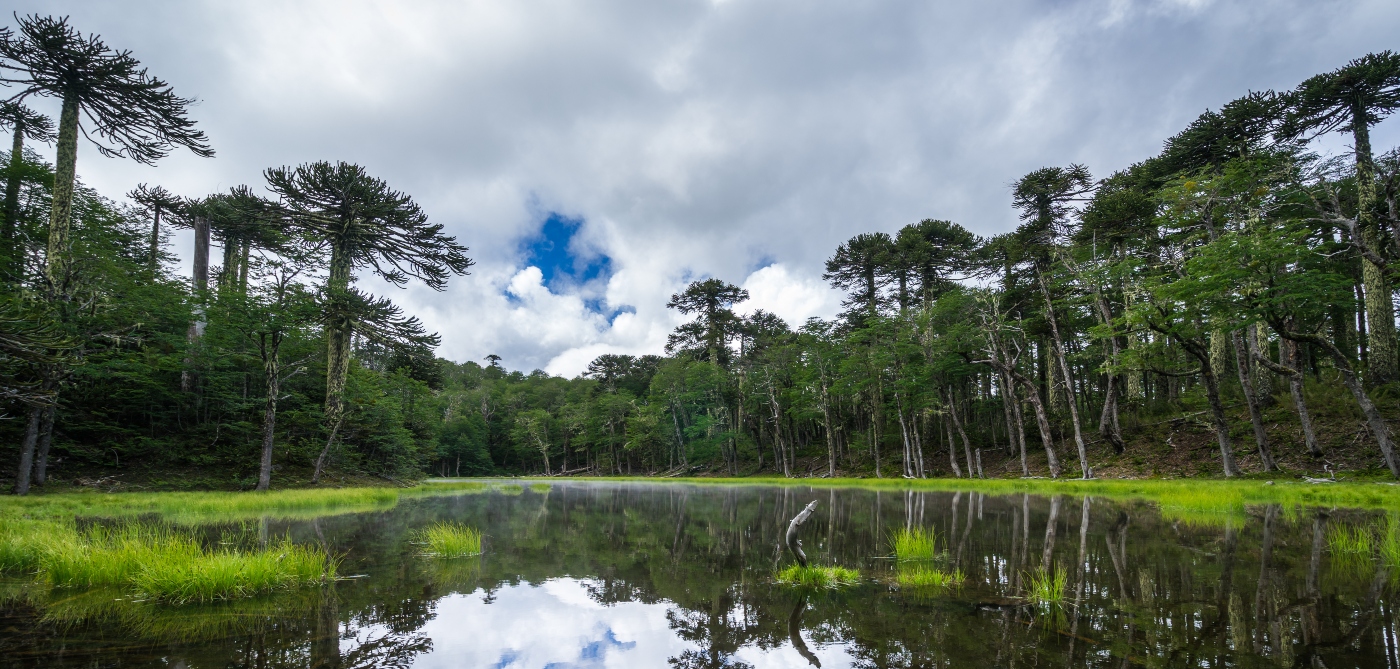
Millenary Araucaria temples in the south of Chile
Conguillío, Lonquimay and China Muerta National Reserve
If you´re looking for an unforgettable encounter with this millenary tree surrounded by the lush nature between the Arauco Territory and Panguipulli, then we invite you to come find the Chilean Araucaria trees.
Located 10 minutes from Melipeuco, Conguillío National Park is the main attraction of the millenary Araucaria region.
Conguillío, originates from “Ko-nqilliu” that in Mapuche language means “pine nuts in the water” o “between pine nuts”, based on the fact that in the 60,000 hectare extension of land inside the park there are an abundance of Araucarias, lakes and lagoons.
Its extraordinary beauty led the BBC television channel to call it one of the last spots in the world to preserve the landscape where dinosaurs lived. For this reason, you should not miss the opportunity to visit this park, if what you are looking for is to have an encounter with this ancient and millenary Araucarias of Chile.
Another unforgettable experience with our tree can be at Lonquimay, where there’s a forest of Araucaria trees, a magical and sacred land where occidental culture cohabits with practices of the native Pehuenche people.
Walking along the trails, on the hills and in the woods, will show you majesty of these snow-covered conifers in the winter. Its cylindrical and deep green branches contain the fruit that has been the basis of the aborigines’ nutrition, who have been able to convert the Pinion into flour to make a kind of dough and even turn it into jam used to sweeten desserts.
In the surrounding areas, one can also find forests full of oaks, lengas and coihues, among other native vegetation. These environments invites one to explore, by foot, on a bike or even on a horse.
Finally, the China Muerta National Reserve is a natural wonder located in Lonquimay, 40 km (25 mi) from Melipeuco. It stands out because of its natural environment, surrounded by ancient Araucarias that, in this part of Chile, are erected in higher areas, giving way to a temperate deciduous forest. It is a perfect place for photographic safaris.
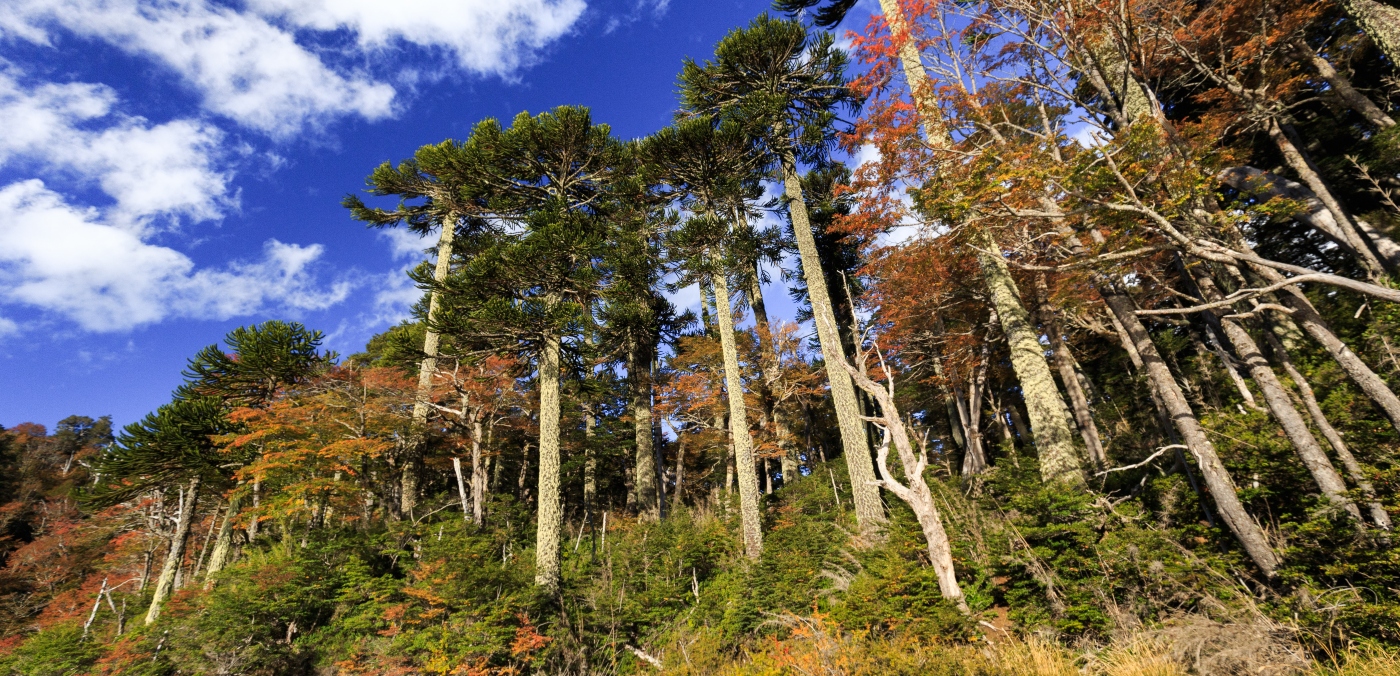
The Araucaria and its bond with the Mapuche people.
The legend of the Pehuén
Long ago the Pehuenche people lived near the “Pehuenes” or araucaria forests. They gathered under the trees to pray, make offerings and hang gifts on their branches, but they did not reap their fruits, thinking they were poisonous and couldn’t be eaten.
One year the winter was very tough and it lasted a longer time, and the people started to run out of resources, the rivers were frozen, the birds had migrated and the trees awaited for spring to arrive. The land was completely covered in snow. Many of the Pehuenches resisted dying of hunger, but the children and the elderly were dying.
After hearing the wise words of one of the tribe’s elders, the Pehuenche people decided to reap the fruits of the Araucaria, the pine nuts. The entire tribe participated in food preparations. Many went out to look for more pine nuts, carried the water and lit the fire.
They then roasted, boiled and ate the pine nuts they had collected. It was an unforgettable party. It is said that, since that day, the Mapuches who live next to the Pehuén tree, who call themselves Pehuenches, will never go hungry again and hope that such a beautiful tree will never be taken from them.
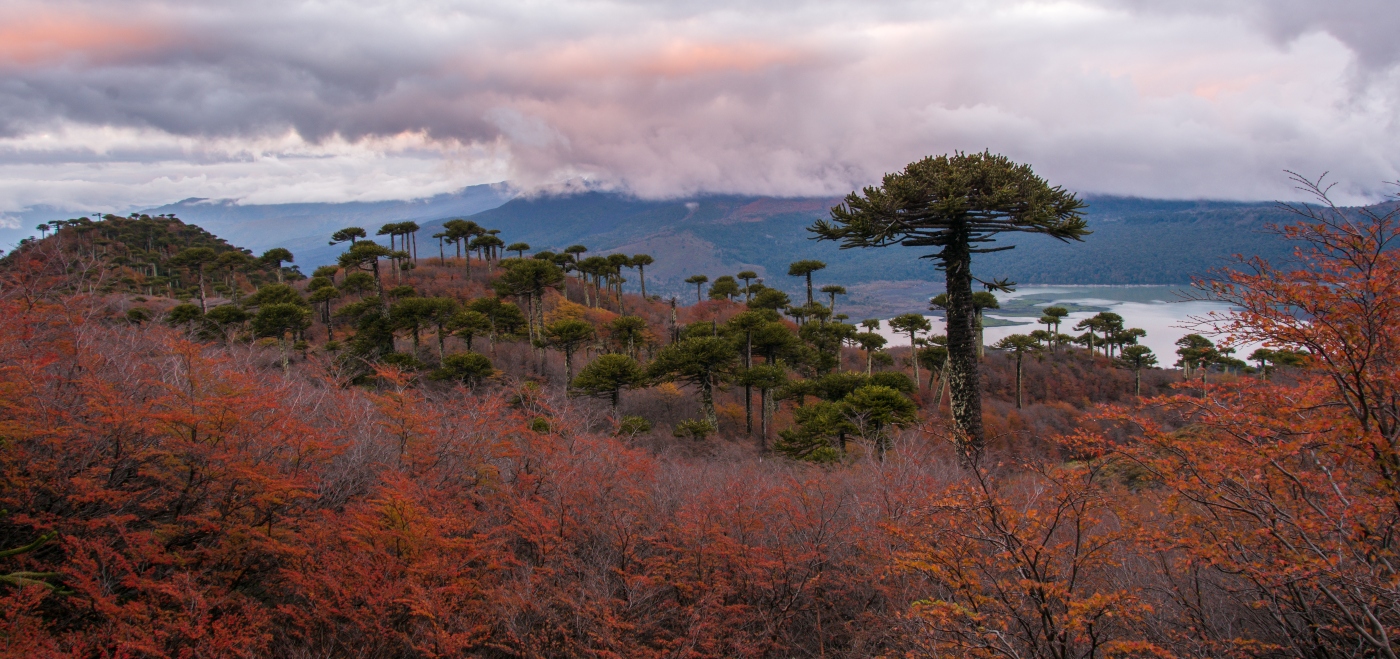
Harvesting the Piñón, an ancestral practice
If you have already seen the beauty of an adult Araucaria tree, you will have noticed that it is not easy to climb one of them. However, the Pehuenches are experts harvesting the Araucaria pine nuts as they can easily climb the trunk, using the rough bark as steps.
The collection of pine nuts is a ritual that is known as “the piñoneo”, an activity that takes place each year between February and April, and has become a tourist at attraction, in which only the chosen candidates can participate.
They need special shoes to be able to climb up the straight trunk and reinforced gloves to handle the pointy leaves. In some cases the harvesters must climb several tens of meters. Up there, with a stick, they hit the bags of pine nuts until they burst to release their fruits.
On a good year, a 100-year old Araucaria, right in its reproductive life, can give up to 400 kilos of pine nuts. But, let´s not get over-excited, because only the female trees give pine nuts, so, only half of them.
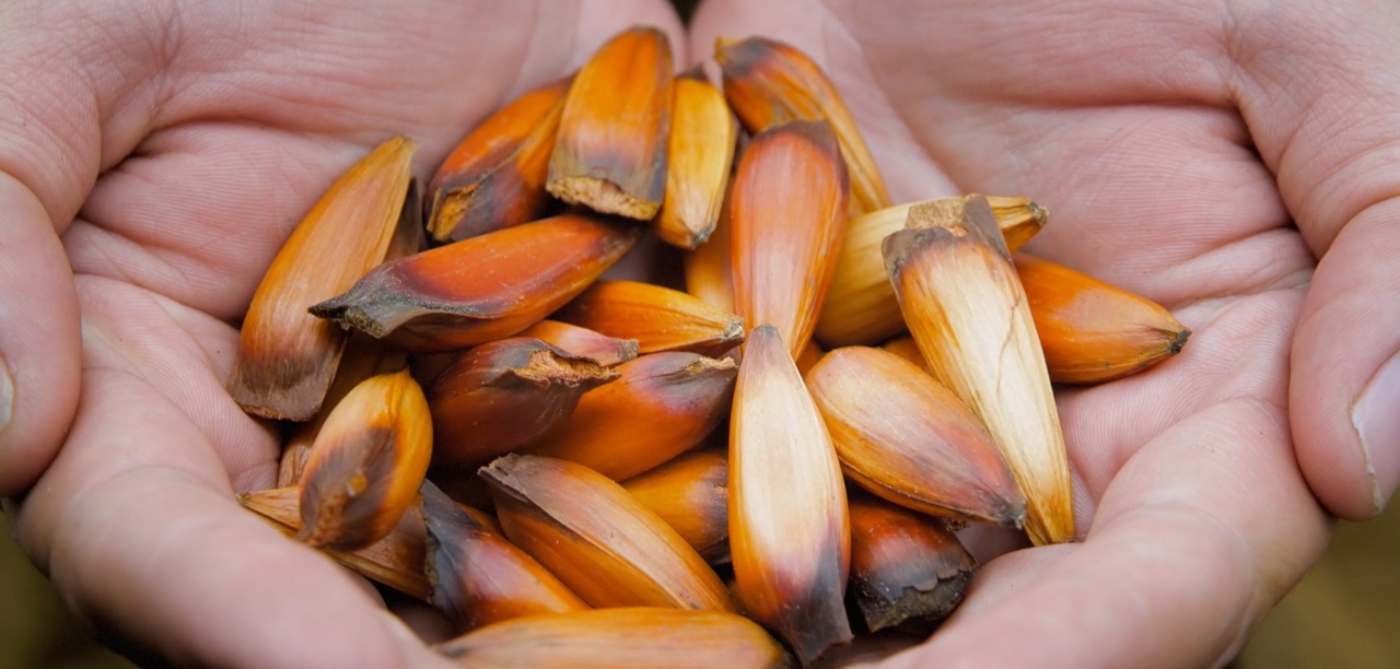
Pine nuts in the kitchen, thousand year old food
And if it comes to eating a fruit that’s rich in minerals, fiber and a good source of protein, pine nuts are the only nuts that do not come from plantations, but are collected from forests. They are the most expensive nuts in the market due to their difficult harvesting work, since 20 to 30 kilos of pines are needed to obtain a kilo of pine nuts.
They are usually eaten raw, in salads, with pasta or stuffed in a bird that´s already cooked. They are also used to prepare sweet dishes because they are very decorative as an ornament, and it is traditionally used at Christmas time. But where we can truly appreciate its flavor is in daily salty dishes, such as in bread, pasta or flour that can be mixed with milk, as a food base for the little ones.
Pine nuts can be found in markets all year, although their consumption is more widespread in the summer and, especially for Christmas, when their demand is higher.
Some of its benefits are:
They contain essential fatty acids such as Omega 6 and Omega 3. These help take care of our cardiovascular system and our brain. They are rich in vitamin E, which strengthens our immune system and increases our defenses. It has minerals such as potassium, magnesium, iron and zinc.
They help reduce elevated levels of LDL or bad cholesterol. They provide large amounts of fiber. A handful of pine nuts have about one gram of fiber, so it is an ideal remedy in case of constipation. In addition, they improve fertility.
They are low in calories so you can have them with any meal and are a very good source of proteins, lipids and carbohydrates.
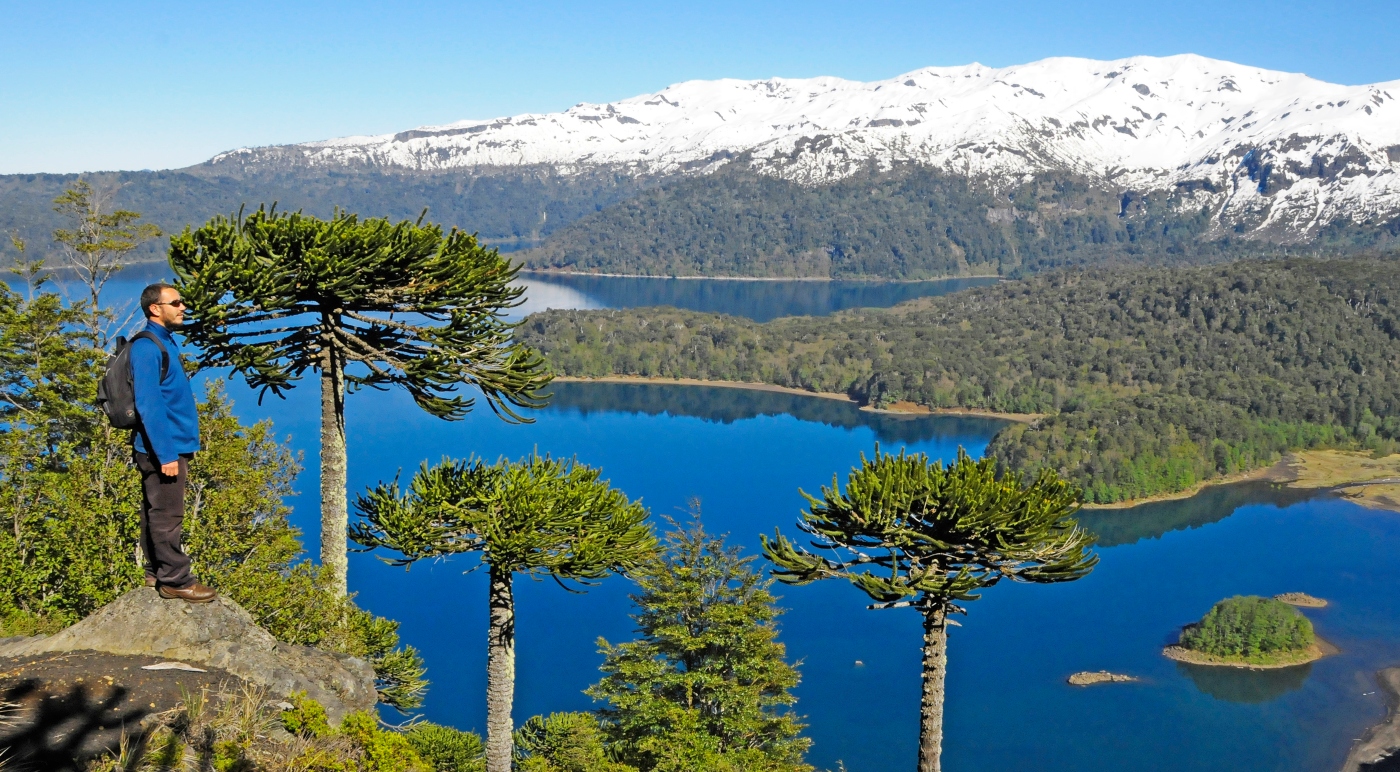
Araucarias, a species that has to be protected
The Pehuenches know the true value of the oldest tree in Chile, the Araucaria, and how to take care of it. Now, it is our living heritage that sparks the interest of everyone, not only because of its beauty and the gifts it gives us, but also for being an emblematic species in danger of extinction.
Explore southern Chile and fall in love with the Araucaria trees just as much as we do and discover for yourself the magic energy you get from hugging one of these trees that are as old as the dinosaurs.
















